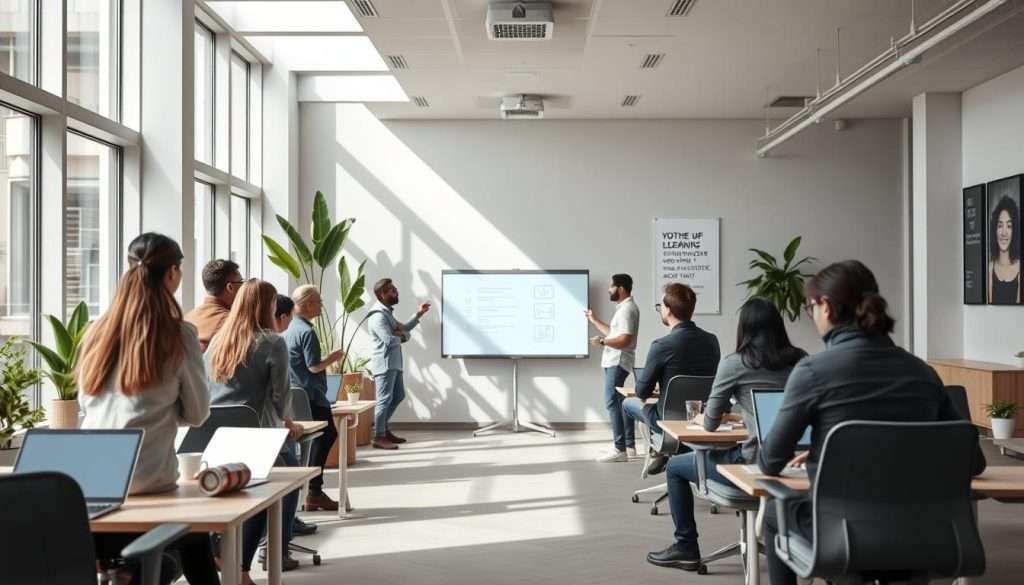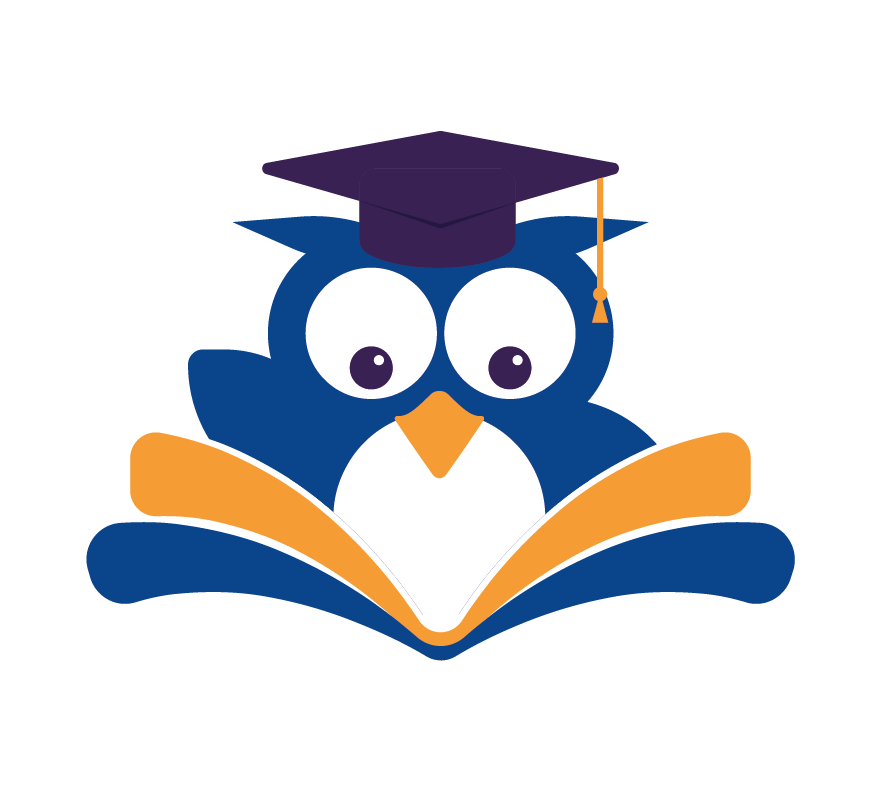In today’s fast world, learning new skills quickly is key. You might want to change careers, start a new hobby, or keep up with trends. Being able to learn on your own is a big plus.
Rachel Wu, a psychology professor, says kids and babies learn easily because they’re always learning. As adults, we can use this curiosity by adopting a growth mindset. This means always being open to learning more.
By the end of this article, you’ll know how to teach yourself anything. You’ll be ready to start learning new skills.
Key Takeaways
- Understand the importance of having a growth mentality for self-learning.
- Learn how to set realistic expectations for acquiring new skills.
- Discover strategies for embracing failure as part of the learning process.
- Develop a clear understanding of how to become a self-directed learner.
- Acquire practical tips for staying motivated and focused on your learning goals.
The Self-Learning Mindset
The journey of self-learning starts with a growth mentality. This mindset helps you face challenges head-on. It’s not just about learning new skills. It’s about being resilient and adaptable in your learning journey.
Developing a Growth Mentality
Having a growth mentality means you believe your abilities can grow with effort. This is key for independent study. It lets you see challenges as chances to grow, not threats to your ego. By focusing on the journey, not just the end, you develop a love for learning.
Embracing Failure as Part of Learning
Manu Kapur, a learning sciences professor, says embracing failure is key. “It’s a constant effort to tell yourself that ‘This is something I do not know. I cannot possibly expect myself to get it immediately,'” he notes. Recognizing failure as part of learning reduces anxiety and boosts your courage to try new things.
Setting Realistic Expectations
Setting realistic goals is crucial for staying motivated in self-learning. Break down big skills into smaller, achievable steps. Here’s a table to help set goals for your self-learning project:
| Skill to Learn | Initial Goal | Milestone 1 | Milestone 2 |
|---|---|---|---|
| Language Learning | Basic Conversations | Hold a 10-minute conversation | Understand various dialects |
| Coding | Build a Simple App | Create a functional prototype | Develop a fully-featured application |
With a self-learning mindset, you’re ready to take on tough skills and reach your goals. This mindset is the base of successful self-learning.
Identifying What You Want to Learn
Before starting with diy courses and online tutorials, figure out what skills you want to learn. Knowing what you want to learn will help you use educational resources better.
Assessing Your Interests and Goals
Think about what really interests you. Do you want to improve your career or explore a hobby? Knowing your goals helps you focus on what you aim to achieve.
Breaking Down Complex Skills
After setting your goals, break down big skills into smaller parts. For example, if you’re learning to code, start with the programming languages you want to master.
Prioritizing Learning Objectives
Put your learning goals in order of importance and urgency. This makes a plan for your learning, helping you stay focused and make progress.
The Science Behind How We Learn
Learning is a lifelong journey. Understanding the science behind it can make us better at teaching ourselves. By knowing how our brains work, we can improve our self-education and acquiring new skills through independent study.
Understanding Memory Formation
Memory formation is key to learning. When we learn something new, it first goes into our short-term memory. To stay in our long-term memory, it needs repetition or practice.
This process helps us keep new skills and knowledge.
The Role of Neuroplasticity
shows our brains can change and adapt with age. This means we can keep learning and getting new skills, no matter how old we get.
Learning Styles and Adaptability
While we might have a preferred way of learning, our brains are very adaptable. This means we can change how we learn to fit different types of information and skills.
Knowing our learning style and being open to change makes our independent study more effective.
How to Teach Yourself Anything: Step-by-Step Process
Starting a self-learning journey can be thrilling and a bit scary. But, with a clear plan, you can learn anything you want. The key is to learn in a structured and efficient way.
The 80/20 Principle in Learning
When learning a new skill, focus on the most important parts. The 80/20 principle says 80% of results come from 20% of effort. By focusing on these key elements, you can learn more efficiently.
Chunking Information Effectively
Breaking down complex info into smaller parts is crucial. This method, called chunking, makes learning easier and helps you remember better. For example, start with simple phrases when learning a new language.
Creating a Learning Roadmap
A good learning roadmap is key to reaching your goals. It involves setting clear milestones at each stage of your learning.
Beginner Milestones
Begin with goals that are easy to achieve. For example, if you’re learning music, start with basic chords.
Intermediate Checkpoints
As you get better, you’ll hit intermediate checkpoints. Here, you’ll check your progress and adjust your plan if needed.
Advanced Goals
Then, you’ll aim for advanced goals. Here, you’ll refine your skills and use them in more complex ways.
| Learning Stage | Milestones | Example |
|---|---|---|
| Beginner | Basic understanding | Learning basic chords on a musical instrument |
| Intermediate | Applying knowledge | Playing simple songs on a musical instrument |
| Advanced | Refining skills | Mastering complex pieces on a musical instrument |
By following this step-by-step guide and making a learning roadmap, you can teach yourself anything. You’ll reach your goals through self-paced learning and DIY courses.
Finding Quality Learning Resources
Finding the right learning resources is key to self-education. With many options out there, knowing where to start is crucial.
Online Platforms and Courses
Platforms like Coursera, Udemy, and edX have a wide range of courses. They offer structured learning experiences with videos, quizzes, and assignments.
Books and Traditional Resources
Books are also valuable for in-depth knowledge. Libraries and online bookstores are great places to find them.
Communities and Forums
Online communities and forums are great for learning. You can ask questions, share resources, and get advice from others.
Finding Mentors and Coaches
A mentor or coach can greatly help your learning. They offer personalized guidance. Look for them through professional networks or online platforms.
Using these resources can make your learning experience rich and engaging. It helps you meet your goals and needs.
Effective Learning Techniques for Different Skills
Different skills need different learning methods. Whether you want to learn a new skill, deepen your knowledge, or master a language, the right method is key. It can greatly impact your learning journey.
For Practical Skills: Deliberate Practice
Deliberate practice is vital for skills like surgery or playing music. It means focused, structured practice to improve specific skills. By targeting areas for improvement, you can boost your skills significantly.
For Theoretical Knowledge: The Feynman Technique
The Feynman Technique is great for learning theory. It involves teaching what you’ve learned as if to a child. This method helps you spot what you don’t know and makes complex info easier to remember.
For Creative Skills: Immersion and Observation
For creative skills, being immersed and observing is crucial. Surround yourself with what you’re learning, whether through reading or practicing. For example, if you’re painting, visit art museums and observe different styles to improve.
For Languages: Immersion and Spaced Repetition
Learning a language works best with immersion and spaced repetition. Use the language in media, conversations, and writing. Spaced repetition helps solidify what you’ve learned, making it stick longer.
| Skill Type | Recommended Technique | Key Benefits |
|---|---|---|
| Practical Skills | Deliberate Practice | Improved performance, focused improvement |
| Theoretical Knowledge | Feynman Technique | Deeper understanding, simplified complex concepts |
| Creative Skills | Immersion and Observation | Enhanced creativity, diverse influences |
| Languages | Immersion and Spaced Repetition | Efficient learning, long-term retention |

Using these techniques can make your learning more effective. Whether you’re learning a new skill or expanding your knowledge, the right method is crucial.
Digital Tools to Accelerate Self-Learning
Explore the digital tools that boost your self-learning journey. Today, self-paced learning is faster with the right tools.
Note-Taking and Knowledge Management Apps
Evernote and OneNote are great for organizing your study materials. They let you tag, search, and find info fast.
Spaced Repetition Software
Anki uses spaced repetition to help you remember new stuff. It’s great for learning new languages or historical dates.
Progress Tracking Tools
Trello and Habitica help you keep track of your learning. You can set goals, make to-do lists, and see your progress.
AI-Assisted Learning Platforms
AI-based platforms offer personalized learning. They adjust to your learning style and speed, making online tutorials and diy courses better.
| Tool Type | Examples | Benefits |
|---|---|---|
| Note-Taking Apps | Evernote, OneNote | Organization, Easy Retrieval |
| Spaced Repetition Software | Anki | Effective Memorization |
| Progress Tracking Tools | Trello, Habitica | Motivation, Goal Setting |
| AI-Assisted Learning Platforms | Various Online Platforms | Personalized Learning Experience |
Time Management for Self-Learners
Time management is more than just scheduling. It’s about making your self-learning journey last. As you explore independent study, good time management helps you reach your goals.
Creating a Sustainable Schedule
First, make a schedule that works for you. Know your daily routine and when you learn best. Make sure you have enough time for your self-education goals.
- Find out when you’re most productive.
- Set aside time just for learning.
- Be ready to change your schedule if needed.
The Pomodoro Technique
The Pomodoro Technique is a great way to manage time. Work in 25-minute focused blocks, then take a 5-minute break. After four blocks, take a 15-30 minute break.
This method keeps you focused and prevents burnout.
Balancing Learning with Other Responsibilities
It’s key to balance self-education with other duties. Prioritize tasks, manage your time well, and make sure learning doesn’t get in the way of other important things in your life.
| Task | Time Allocation | Priority |
|---|---|---|
| Learning | 2 hours | High |
| Work | 8 hours | High |
| Family Time | 2 hours | High |
| Leisure | 1 hour | Medium |
Avoiding Burnout
Lastly, avoid burnout by taking breaks, taking care of yourself, and keeping a healthy balance between work and life. Remember, time management is about being productive and sustainable.

By using these strategies, you can manage your time well, meet your self-education goals, and keep a balanced life.
Overcoming Common Learning Obstacles
Starting a self-learning journey comes with facing obstacles. You’ll meet challenges that test your willpower. But, with the right strategies, you can keep moving forward.
Dealing with Plateaus and Frustration
Plateaus are a normal part of learning. When you feel stuck, take a step back and rethink your approach. Manu Kapur’s work shows the value of pushing through challenges.
Understanding that setbacks are part of learning helps you overcome frustration. This way, you can keep moving forward.
Managing Information Overload
With so much information out there, it’s easy to feel overwhelmed. To handle this, break down information into smaller chunks. Focus on the most important data.
This makes complex topics easier to understand without feeling overwhelmed.
Staying Motivated Through Challenges
Staying motivated is key when facing challenges. Set small, achievable goals and celebrate your wins. Every small step brings you closer to your goal.
When and How to Pivot Your Approach
Sometimes, you need to change your learning strategy. Knowing when to do this is important. If your current method isn’t working, it’s time to try something new or get help from a mentor.
| Obstacle | Strategy |
|---|---|
| Plateaus | Reassess and adjust your learning approach |
| Information Overload | Chunk information and prioritize |
| Staying Motivated | Set small milestones and celebrate successes |
| Pivoting Approach | Recognize when to adjust your strategy |
Applying What You Learn in Real Life
Putting your knowledge into action is where the real learning happens. As you acquire new skills, it’s essential to apply them in real-life situations. This helps reinforce your learning.
Creating Practice Opportunities
One of the most effective ways to solidify your learning is by creating opportunities to practice. This could mean taking on new projects at work, volunteering, or even participating in competitions related to your new skill. For instance, if you’re learning a new language, try conversing with native speakers or writing short stories.
Building a Portfolio or Body of Work
As you practice, it’s crucial to document your progress. Building a portfolio or body of work showcases your skills to potential employers or clients. It also helps you track your improvement over time. Whether it’s a graphic design project or a coding repository, having a tangible representation of your work is invaluable.
Teaching Others to Solidify Knowledge
Teaching others what you’ve learned is a powerful way to solidify your own knowledge. It forces you to understand the material deeply and articulate it clearly. You can teach through blogging, creating tutorials, or even mentoring someone directly.
Networking with Others in Your Field
Networking with others in your field can provide valuable feedback and opportunities. Attend conferences, join online forums, or participate in local meetups. Engaging with a community of like-minded individuals can help you stay motivated and inspired.
By applying what you learn through practice, portfolio-building, teaching, and networking, you’ll not only reinforce your new skills. You’ll also open doors to new opportunities.
Conclusion
Teaching yourself anything is a journey that needs the right mindset and strategies. By learning on your own, you take charge of your education. This empowers you to reach your goals.
We talked about the importance of a growth mindset and knowing what you want to learn. We also looked at using digital tools and managing your time well. Overcoming learning obstacles is also crucial.
Keep going on your self-learning journey with persistence and dedication. Celebrate every small step of progress. Apply what you learn in real life to understand it better and build confidence.
By embracing self-learning, you gain new skills and knowledge. You also develop a lifelong love for learning. We encourage you to keep exploring, learning, and enjoying the process of teaching yourself anything.

